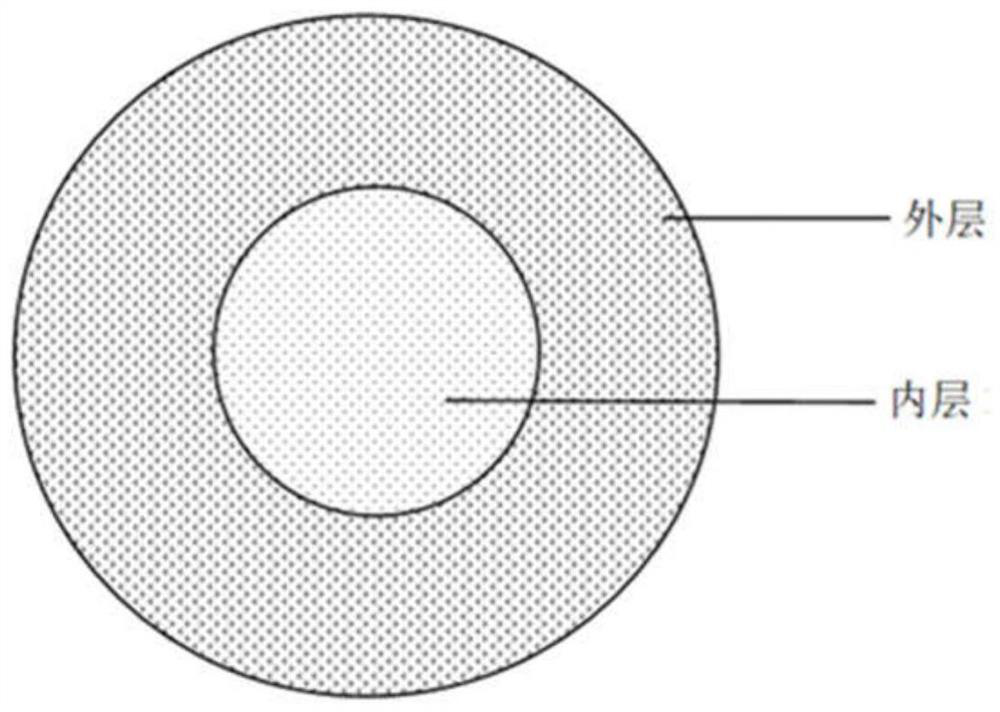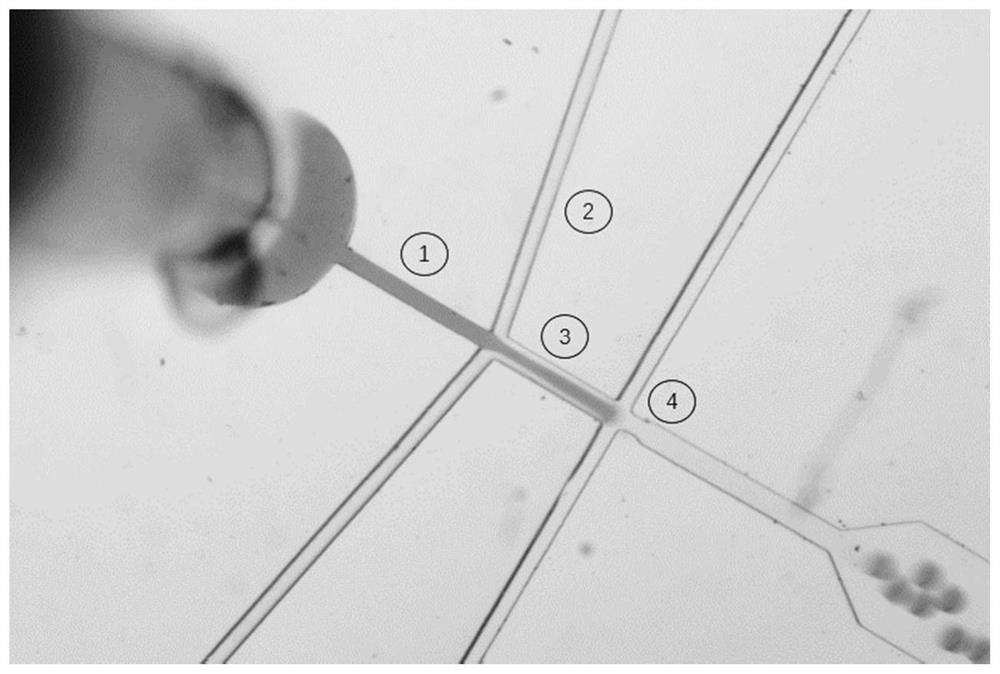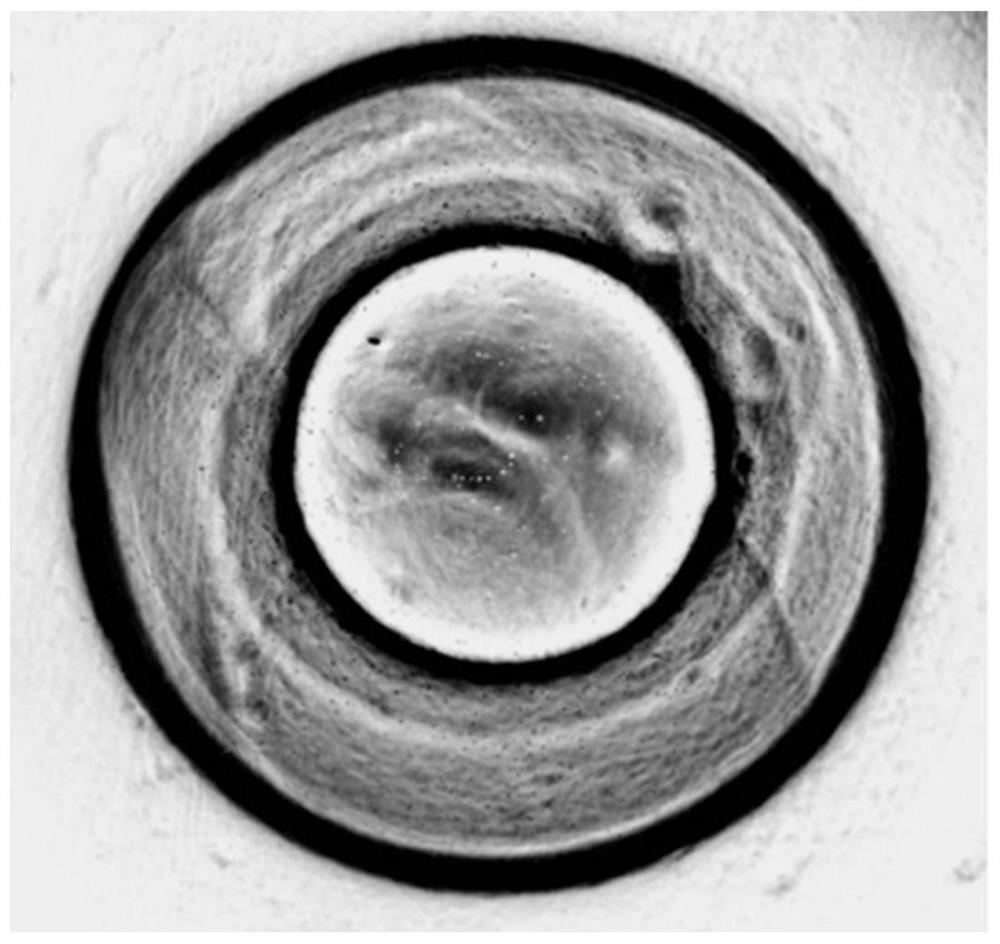A core-shell structure microsphere and its application for monitoring the mechanical properties and contraction frequency of muscle cells
A technology with mechanical properties and core-shell structure, applied in the field of biomedicine, it can solve the problems of not being able to fully simulate muscle cells, accurately reproducing the connections of cells in three-dimensional tissues and the microenvironmental obstacles in which they are located, and achieving good biocompatibility, High detection sensitivity and wide range of materials
- Summary
- Abstract
- Description
- Claims
- Application Information
AI Technical Summary
Problems solved by technology
Method used
Image
Examples
Embodiment 1
[0027] Using a microfluidic chip to prepare a figure 1 Microspheres with a core-shell structure are shown. First prepare the core and shell materials, the core material is 3% FITC-labeled agarose gel solution; the shell material is the cardiomyocytes obtained by induction and differentiation of human pluripotent stem cells (10 5 / mL) and Gel-MA gel solution (4%, w / w) mixture. Use a syringe pump to feed the core and shell materials into the figure 2 In the channels 1 and 2 of the microfluidic chip shown, the two materials form an interlayer flow at 3, and are pinched off by the oil phase at 4 to form droplets. The liquid flow rates at channels 1 and 2 are 20 μl / hour, 60 microliters / hour, and the oil phase velocity at channel 4 is 180 microliters / hour. Collect the droplets and incubate them in a 37°C incubator for 30 minutes. After the gel of the shell and core layers solidifies, microspheres with a core-shell structure are formed. The oil phase is discarded and the microsp...
Embodiment 2
[0030] Microspheres with a core-shell structure were prepared using a coaxial nozzle. Preparation of core and shell materials, core material: 80% (w / w) benzyl silicone oil, 12% vinyl silicone oil, 6% hydrogen-containing silicone oil, 1% platinum catalyst, 1% CdSe quantum dots; shell material: Cardiomyocytes induced and differentiated from human pluripotent stem cells (10 6per mL), gelatin solution (4%, w / w), transglutaminase (5 mg / mL). The core and shell materials are respectively extruded from the inner and outer layers of the coaxial nozzle, and the flow rates of the inner and outer layers are 40 microliters / hour and 20 microliters / hour, respectively. Apply a high voltage of 3.5KV to separate the droplets from the nozzle and fall into the high-viscosity silicone oil below (viscosity 2000cst). Put it in a 37°C incubator and incubate for 30 minutes. After the shell gel is solidified, discard the silicone oil, add the medium, centrifuge to separate the microspheres, add them ...
Embodiment 3
[0035] Using a microfluidic chip to prepare a figure 1 Microspheres with a core-shell structure are shown. First prepare the core and shell materials, the core material is 3% FITC-labeled agarose gel solution; the shell material is the cardiomyocytes obtained by induction and differentiation of human pluripotent stem cells (10 7 individual / mL) and gelatin solution (4%, w / w), the mixture of glutaminase (5mg / mL). Use a syringe pump to feed the core and shell materials into the figure 2 In the channels 1 and 2 of the microfluidic chip shown, the two materials form a sandwich flow at 3, and are pinched off by the oil phase at 4 to form droplets. The liquid flow rates at channels 1 and 2 are 10 μl / hour, 50 microliters / hour, and the oil phase velocity at channel 4 is 200 microliters / hour. Collect the droplets and incubate them in a 37°C incubator for 30 minutes. After the gel of the shell and core layers solidifies, microspheres with a core-shell structure are formed. The oil p...
PUM
| Property | Measurement | Unit |
|---|---|---|
| diameter | aaaaa | aaaaa |
| thickness | aaaaa | aaaaa |
| particle diameter | aaaaa | aaaaa |
Abstract
Description
Claims
Application Information
 Login to View More
Login to View More - R&D
- Intellectual Property
- Life Sciences
- Materials
- Tech Scout
- Unparalleled Data Quality
- Higher Quality Content
- 60% Fewer Hallucinations
Browse by: Latest US Patents, China's latest patents, Technical Efficacy Thesaurus, Application Domain, Technology Topic, Popular Technical Reports.
© 2025 PatSnap. All rights reserved.Legal|Privacy policy|Modern Slavery Act Transparency Statement|Sitemap|About US| Contact US: help@patsnap.com



